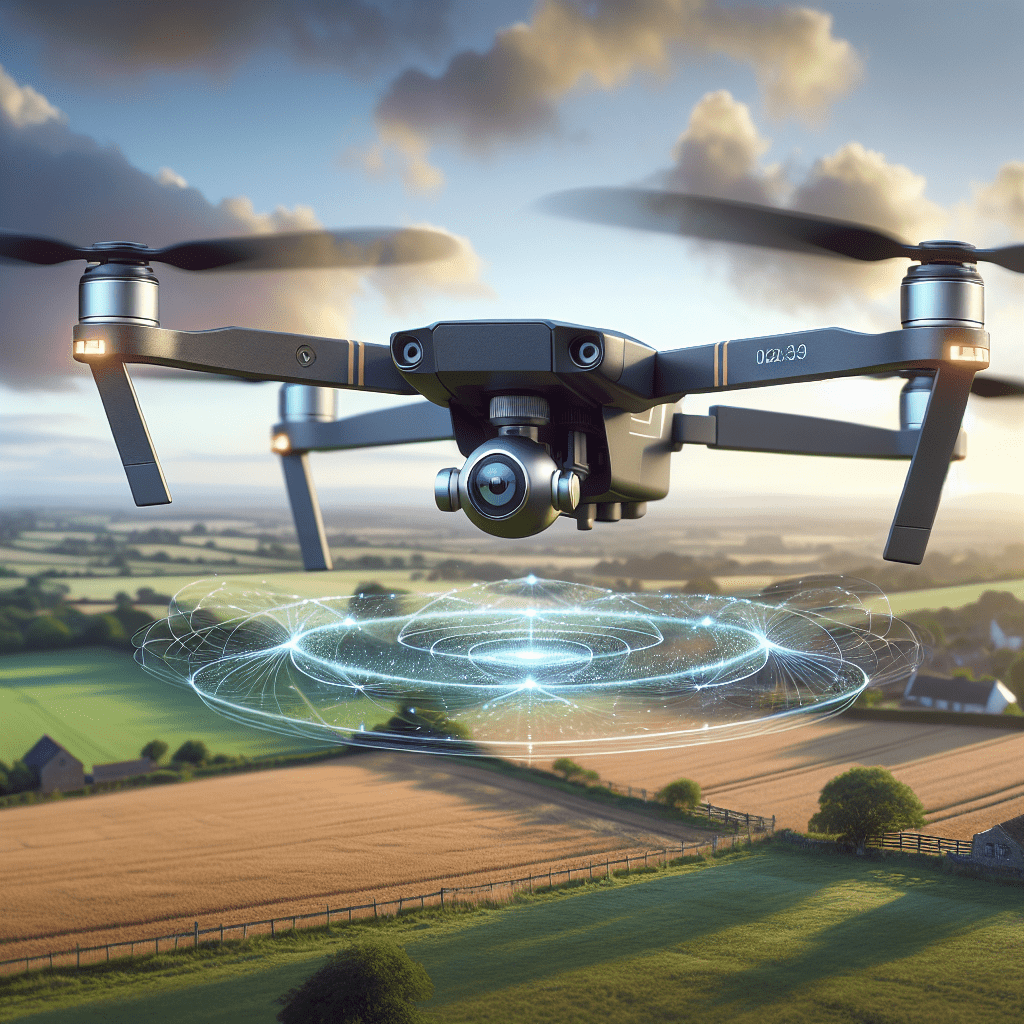Drone Crash Prevention: Aero3 Lite’s Sensor Safety Guide
In This Article
- Smart sensors reduce collision risks significantly for all users
- Aero3 Lite combines infrared and ultrasonic technology for 360° awareness
- Automation enhances confidence for beginner pilots
- Meets new EU safety regulations for 2025
- User testimonials confirm real-life crash avoidance success
What Makes Drone Crash Prevention Essential?
Understanding Beginner Flight Risks
Drone crash prevention is one of the most vital considerations for any drone operator, especially beginners. Each year, thousands of drone crashes occur, the majority of which result from pilot error, poor environmental assessments, and unfamiliarity with flight controls. For novice users, flying a drone may seem straightforward; however, the reality is far more nuanced. There are numerous elements such as wind gusts, signal interference, low battery levels, and obstacle-heavy environments that all contribute to a drone’s vulnerability in flight.

Not all drones are built equal. Entry-level models often lack the comprehensive safety protocols seen in higher-end models. As a consequence, beginners are particularly susceptible to crashes. The importance of drone crash prevention lies not only in safeguarding the equipment, which can be expensive to repair or replace, but also in avoiding potential harm to people, property, and wildlife. Moreover, frequent crashes can diminish a user’s confidence, deterring them from continued engagement and skill development with drones. For these reasons, proper crash prevention methods and technologically advanced features, such as those found in Aero3 Lite, are critical from the outset of one’s drone journey.
Meet Aero3 Lite: Built for Safety
Key Sensor-Driven Crash Protection
The Aero3 Lite is an intelligent drone designed with drone crash prevention at its core. One of its standout features is its multi-sensor safety system, which actively scans surroundings to detect potential threats or obstacles. This technology minimises the chance of accidental collisions, which are among the most common causes of drone accidents. Whether you’re flying indoors, through a cluttered urban environment, or amidst unpredictable weather, the Aero3 Lite adapts through the use of adaptive spatial mapping.
Its dual-layered safety infrastructure includes active obstacle avoidance sensors that utilise advanced algorithms to detect and react to objects in real-time. The technology functions not merely by sensing, but also by calculating optimal evasive manoeuvres well before contact could occur. This balance between hardware resilience and software intelligence makes the Aero3 Lite a powerful tool against unintended crashes. It’s not about overloading the operator with extra settings; rather, it’s about incorporating intelligent design that complements the pilot’s movements while maintaining safety in every flight instance.
How Do Aero3 Lite Smart Sensors Work?
Infrared & Ultrasonic Sensor Fusion
The real magic behind the Aero3 Lite’s drone crash prevention system lies in its sensor fusion technology. At the heart of this innovation is the simultaneous use of infrared and ultrasonic sensors. These work together to create a composite spatial awareness map that enables the drone to understand distances and detect potential hazards across multiple axes.
Infrared sensors assist by scanning for object heat signatures and disruptions within a close range, making them ideal for indoor flying where objects may be static but numerous. Ultrasonic sensors, meanwhile, emit high-frequency sound waves and measure their rebound time to calculate distance. This dual mechanism allows the Aero3 Lite to navigate complex environments fluidly. Unlike older or less sophisticated drones that respond after bumping into an object, the Aero3 Lite proactively avoids collisions.
Additionally, this fusion offers enhanced performance in varied lighting conditions. While visible light sensors may struggle during transitions from bright sunlight to dark interiors, infrared and sound-based detection methods maintain consistency. These sensors continuously feed data to the drone’s onboard processor, allowing it to make instant navigational adjustments that keep it safe and stable. Consequently, drone crash prevention becomes less of a reactive process and more of a proactive, intelligent workflow.
Obstacle Detection in Crowded Environments
Real-Life Situations Where It Matters
Urban flying zones are becoming busier each year, with more air traffic and tighter spaces. Crowded environments pose a significant risk for drone crashes due to increased obstacles, unpredictable human movement, and electromagnetic interference. The Aero3 Lite excels in such scenarios thanks to its multi-directional sensing technology. Whether you’re navigating a wooded area, weaving between buildings, or conducting aerial footage during a social event, drone crash prevention becomes possible even for first-time pilots.
One real-world application includes indoor inspections where Wi-Fi routers, metal ducts, or hanging objects typically confuse less advanced models. Aero3 Lite, however, seamlessly adjusts course to avoid these obstacles while maintaining optimal framing if filming. Another instance is in sports photography: drones may need to fly close to fast-moving objects or people. Here, the advanced sensors help manage dynamic surroundings intelligently. In many cases, such automated collision avoidance has proven effective in preventing devastating wrecks and maintaining the stability of the drone mid-flight.
Benefits for First-Time Drone Pilots
Peace of Mind via Automation
First-time users often worry about crashing their drones, which may deter them from exploring more advanced manoeuvres or flying in restricted spaces. Fortunately, with the Aero3 Lite, drone crash prevention isn’t an add-on feature—it’s a foundational element built directly into its operational core. This allows beginners to focus on learning how to control the drone without worrying about damaging their equipment during early usage.
Automation plays a crucial role here. With smart sensors constantly analysing the environment, the drone autonomously corrects flight paths and decreases speed when necessary. The fail-safe return-to-home function also activates in scenarios where signal strength is compromised or battery levels drop below a safe threshold. This multi-faceted approach means that users are supported both actively during flights and passively through precautionary protocols. As a result, newcomers can enjoy drone experiences with far greater safety and confidence. Learn more about Beginner Drone Safety & Smart Flight Technology
Beyond Hardware: Safe Flight Practices
Why Sensors Alone Aren’t Enough
While the Aero3 Lite’s smart sensors offer unparalleled crash prevention, it is equally important to adopt standard safety practices. Good piloting habits enhance the efficiency of any technological assistance. Always begin flights with a comprehensive pre-flight checklist that includes calibrating sensors, checking battery levels, and reviewing the intended flight path. Environmental awareness—such as monitoring for birds, power lines, or sudden weather changes—cannot be substituted by hardware.
Safe distances must be maintained, especially in public spaces. Additionally, adopting a gradual learning curve aids drone crash prevention significantly. Begin with low-altitude flights in obstacle-free zones to understand handling before venturing into more complex zones. Combining these responsible behaviours with the Aero3 Lite’s technology offers the best formula for long-term success and safety in drone piloting. Read a related article
Comparing Safety Tech in Entry Drones
Aero3 Lite vs Other Models
When compared head-to-head with other entry-level drones, Aero3 Lite’s emphasis on drone crash prevention clearly sets it apart. Many affordable models lack even basic collision detection capabilities, relying solely on pilot skill for avoidance. By contrast, the Aero3 Lite includes multi-angle obstacle sensors, wind-resistant stabilisers, and live telemetry feedback for robust situational awareness.
Most budget drones also fail to include emergency landing algorithms or real-time object mapping. These absences dramatically increase user error risks. Some models may include partial avoidance sensors, but they often cover a forward-only field, rendering them ineffective in reverse or side-slide manoeuvres. The Aero3 Lite’s all-directional coverage ensures superior performance under real-world conditions. Investing in a model focused on crash prevention inevitably reduces long-term costs of repair and replacement, offering greater reliability and peace of mind.
Smart Sensors and Regulatory Compliance (EU 2025)
Meeting Safety Standards with Tech
With the European Union set to implement stricter drone safety regulations by 2025, smart sensor technology like that found in the Aero3 Lite positions pilots one step ahead. These upcoming standards will require real-time object detection, geo-fencing capabilities, and remote ID broadcasting—all features that are natively supported by this intelligent device.
Drone crash prevention will not only protect users and bystanders but also become a legal requirement in many jurisdictions. The Aero3 Lite ensures full compliance through automated awareness features that conform to both current Civil Aviation Authority (CAA) and forthcoming EU regulations. This future-proofing attribute makes it an excellent investment for drone pilots looking to stay compliant and safe. types of smart sensors and uses
User Stories: Drones Saved by Smart Sensors
When Tech Prevents Real Crashes
The practical effectiveness of drone crash prevention is best illustrated via real-life anecdotes. One Aero3 Lite user reported a complete system save when flying near an old cathedral. A strong wind gust pushed the drone off-course towards a bell tower, but the sensors adjusted in real-time, rerouting the drone to safety. Another pilot avoided a rooftop collision during a wedding shoot, when the system detected a flagpole outside the field of view and automatically decelerated.
These sensor-initiated evasions would have been difficult, if not impossible, for human reflexes to manage swiftly enough. Such moments underline how the Aero3 Lite offers more than just accident reduction—it provides pilots with a fallback system that actively supports them during complex missions, acting as an invisible co-pilot who constantly watches out for errors and hazards.
FAQs on Drone Crash Prevention Sensors
Common Questions Answered
Q: Can smart sensors be turned off?
A: Yes, the Aero3 Lite allows for customisation of sensor sensitivity and deactivation for experienced pilots seeking full manual control.
Q: Do sensors work in low light?
A: Absolutely. Its infrared sensors are specifically designed to function efficiently in both high and low-light conditions.
Q: Are these sensors suitable for high-speed flight?
A: While designed primarily for stability and crash avoidance, smart sensors perform optimally at moderate speeds. For high-speed flights, caution is still advised.
Q: How often should sensors be calibrated?
A: Ideally, you should perform a calibration weekly or before any complex flight activity to ensure optimal performance.
Q: Will updates improve crash prevention?
A: Yes. Aero3 Lite receives regular firmware updates that fine-tune the intelligence of its sensor operations for even better performance.
“What sets Aero3 Lite apart is the harmony between software intuition and sensor accuracy—crash prevention technology that actually works in real-time.”
Conclusion: Worry-Free Flights Start With Aero3
Drone crash prevention is no longer a novelty—it is a necessity. The Aero3 Lite distinguishes itself by incorporating comprehensive smart sensor technology that assists pilots at every stage of flight. From infrared and ultrasonic fusion to real-time environmental responsiveness, the Aero3 Lite has become the benchmark in intelligent flight safety. It not only protects the drone and surroundings but also empowers new users to explore boldly and confidently.
Built for compliance with emerging EU standards and equipped for real-world challenges, the Aero3 Lite ensures that pilots aren’t just flying smarter—they’re flying safer. Its holistic approach, combining robust hardware with fluid software integration, lays a solid foundation for both learning and professional-grade operation. Career videographers, hobbyists, and beginners alike can all benefit from investing in a drone that puts safety first—not as an afterthought, but as a fundamental feature.
Great guide on aero-3-lite-smart-sensors-crash-prevention-guide – Community Feedback
How do the Aero 3 Lite’s smart sensors detect obstacles?
Aero 3 Lite’s smart sensors constantly scan for obstacles in real time using infrared and ultrasonic technology. When an object is detected in the drone’s flight path, the sensors trigger automatic adjustments—like slowing down, hovering, or changing direction—to prevent collisions.
Are smart sensors useful for first-time drone pilots?
Yes, smart sensors greatly assist beginners by providing automated safety responses. This means new pilots can focus on flying without worrying about accidental crashes, as the drone can intervene when it senses nearby hazards.
Can smart drones completely eliminate the risk of crashes?
Smart sensors dramatically reduce the risk of crashes but do not guarantee 100% safety. Factors like weather, signal loss, or operator error can still lead to accidents, so responsible flying and attention to surroundings are still essential.

